Chicken Nanban is one of the most popular chicken dishes in Japan. The combination of fried chicken, Nanban sauce, and tartar sauce is simply irresistible, offering a rich, slightly sweet, and tangy flavor that sets it apart from other dishes.
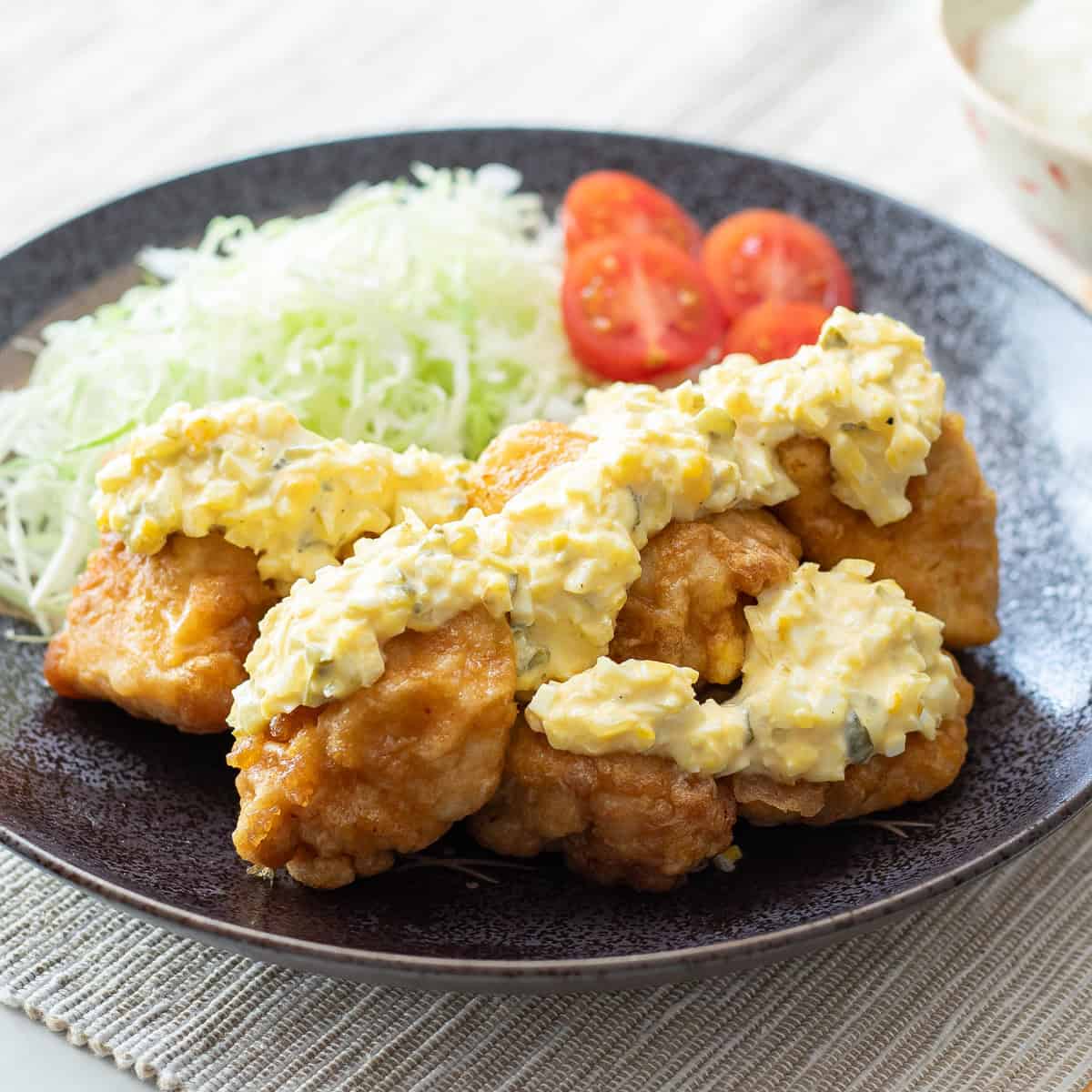
This recipe stays true to the Miyazaki-style preparation, the birthplace of the dish, ensuring an authentic taste experience.
Jump to:
What is Chicken Nanban?
Chicken Nanban is a dish made by coating chicken in a batter of flour and eggs, deep-frying it, and then soaking it in a sweet and tangy vinegar-based Nanban sauce. It is typically served with a Japanese-style tartar sauce. Originally a local specialty of Miyazaki Prefecture in southwestern Japan, it has since become a popular chicken dish enjoyed throughout the country.
There is an interesting history behind the name "Nanban." In the 16th century, Portuguese and Spanish traders arrived in southwestern Japan seeking trade opportunities.
The goods and culture they introduced were referred to as "nanban," and one of these influences was a pickled dish called "Nanbanzuke," which consisted of seafood or meat marinated in a sweet and tangy vinegar-based sauce with chili peppers. Since chicken nanban uses a sauce similar to that of nanbanzuke, it was named after it.
However, the story of this dish doesn’t end there. As it spread across Japan, different regional variations began to emerge.
In some regions, simply topping fried chicken with a sweet vinegar-based sauce and tartar sauce qualifies as chicken nanban. In others, variations include using different breading ingredients—or even grilling instead of frying—while still being considered chicken nanban. This has sparked occasional debates about whether variations outside of Miyazaki can truly be regarded as "authentic."
While each variation has its own charm, my recipe stays true to the original Miyazaki style. That means preparing the chicken in the traditional way, ensuring that it fully absorbs the sweet and tangy nanban sauce.
The perfect balance of fried chicken, nanban sauce, and creamy tartar sauce makes it absolutely delicious. I hope you enjoy it!
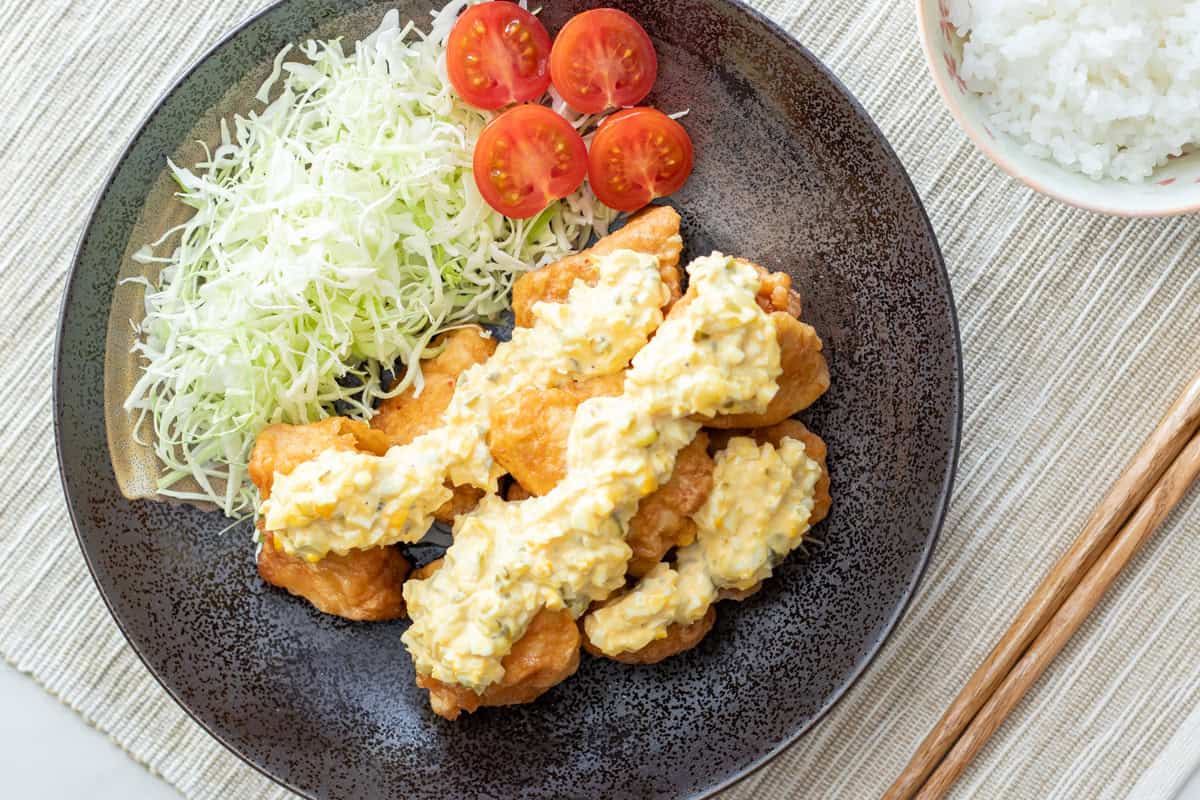
Choosing the right cut of chicken
This dish presents another point of debate: which cut of chicken to use.
When chicken nanban was first created, it was made with chicken breast. This was because the dish was originally created to make breast meat, which was considered less popular due to its mild flavor, more enjoyable to eat. The sweet and tangy vinegar-based sauce and tartar sauce in this dish were intended to enhance the flavor of the lean breast meat.
However, nowadays, even in Miyazaki, where the dish originated, using chicken thighs has also become a popular choice. This is because the juicier thigh meat adds more richness to the dish.
In the end, the choice comes down to personal preference. Either option can result in a delicious chicken nanban, so feel free to use whichever cut you prefer in your recipe.
A unique coating that absorbs flavor
Chicken nanban also has a unique characteristic in its coating.
When it comes to fried foods, ingredients such as flour, cornstarch, potato starch, or breadcrumbs are often used to create a crispy texture. However, for chicken nanban, the batter is typically made by first dusting the chicken with flour and then dipping it in an egg mixture, which results in a slightly softer texture. This is because both the flour and the egg mixture absorb moisture well, allowing the sauce to soak in more effectively.
When frying, the chicken is cooked slowly at a temperature of 338-356℉ (170-180℃). In Japan, double-frying is a common technique used for dishes like Chicken Karaage (Japanese fried chicken) to achieve a crispy exterior while keeping the inside juicy. However, this step is not necessary for this dish, as the coating softens when soaked in nanban sauce afterward.
In other words, this dish requires fewer ingredients and frying steps than typical fried foods, making it easier to prepare. By using the right ingredients, you can achieve a coating that pairs perfectly with the sweet and tangy nanban sauce.
Exploring nanban sauce
The key to making delicious chicken nanban lies in its sweet and tangy nanban sauce rather than in the coating or frying method. It is no exaggeration to say that this dish is beloved throughout Japan for its distinctive flavor.
Nanban sauce is made by briefly simmering a blend of ingredients, such as rice vinegar, mirin, sugar, soy sauce, and chili peppers. When used for this dish, it is often made sweeter rather than tangier to better complement the flavor of the chicken and its coating.
After frying the chicken, it is important to soak it in the sauce while it is still warm, allowing the flavors to penetrate. The longer you let the chicken marinate, the more flavor it absorbs, while a shorter soak helps preserve the texture of the coating. In my recipe, I soak it for a few minutes, but feel free to adjust the time to your preference.
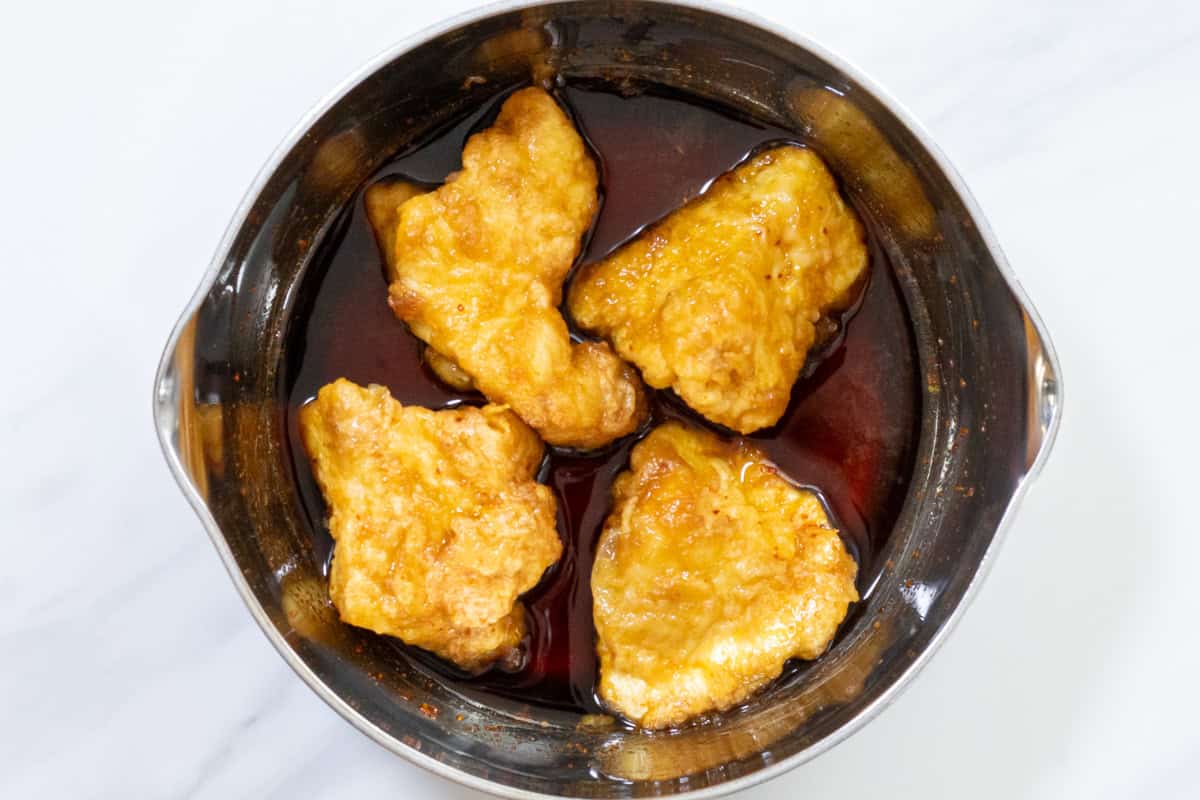
The role of tartar sauce
Finally, top the chicken with tartar sauce, and your chicken nanban is ready to serve.
The tartar sauce used in Japanese cuisine is slightly different from the Western version, as it is made with Japanese mayonnaise and boiled eggs, giving it a richer flavor. While this recipe includes instructions for making it, if you would like more details, please refer to the Japanese Tartar Sauce page. It also pairs well with various fried foods.
That said, tartar sauce isn’t actually essential for this dish. Since the chicken is already seasoned with nanban sauce, it is delicious on its own. In fact, in Miyazaki, many restaurants serve it without tartar sauce.
Still, I personally believe that adding tartar sauce takes the dish to the next level.
The combination of fried chicken, sweet and tangy vinegar-based nanban sauce, and creamy tartar sauce creates a unique flavor experience that you won’t find in other dishes. So, I highly recommend trying it with tartar sauce the first time you make it.
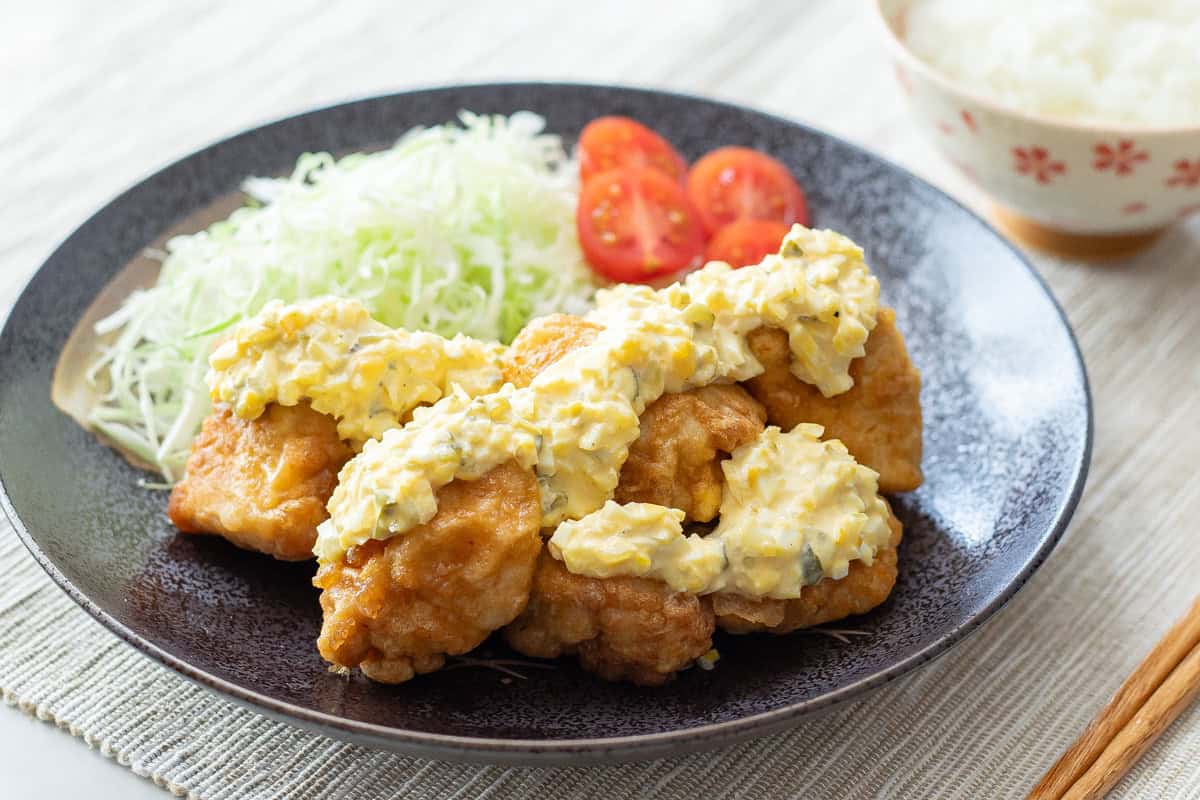
📋Step-by-step recipe
Ingredients
For the Japanese tartar sauce:
- 1 large egg (about 2.1 oz/60 g, including shell)
- ⅛ onion (about 0.9 oz/25 g)
- 0.44 oz pickles (gherkins)
- 2 Tbsp Japanese mayonnaise (such as Kewpie Mayo; 0.53 oz/15 g per 1 Tbsp. For a homemade version, please refer to the linked article.)
- 1 tsp lemon juice
- ¼ tsp sugar
- ⅛ tsp salt
- a pinch of ground black pepper
For the nanban sauce:
- 2 Tbsp rice vinegar
- ½ Tbsp mirin
- 1 ½ Tbsp sugar
- 2 Tbsp soy sauce
- a pinch of ground chili pepper
For the fried chicken:
- 10.6 oz boneless, skin-on chicken thighs or breast
- a pinch of salt
- 3 Tbsp all-purpose flour (plain flour)
- 1 large egg (about 2.1 oz/60 g, including shell)
- 1.4 inches (3.5 cm) or more of neutral oil in the pot (for deep-frying)
Instructions
🕒 Total: 35 minsFor the Japanese tartar sauce:
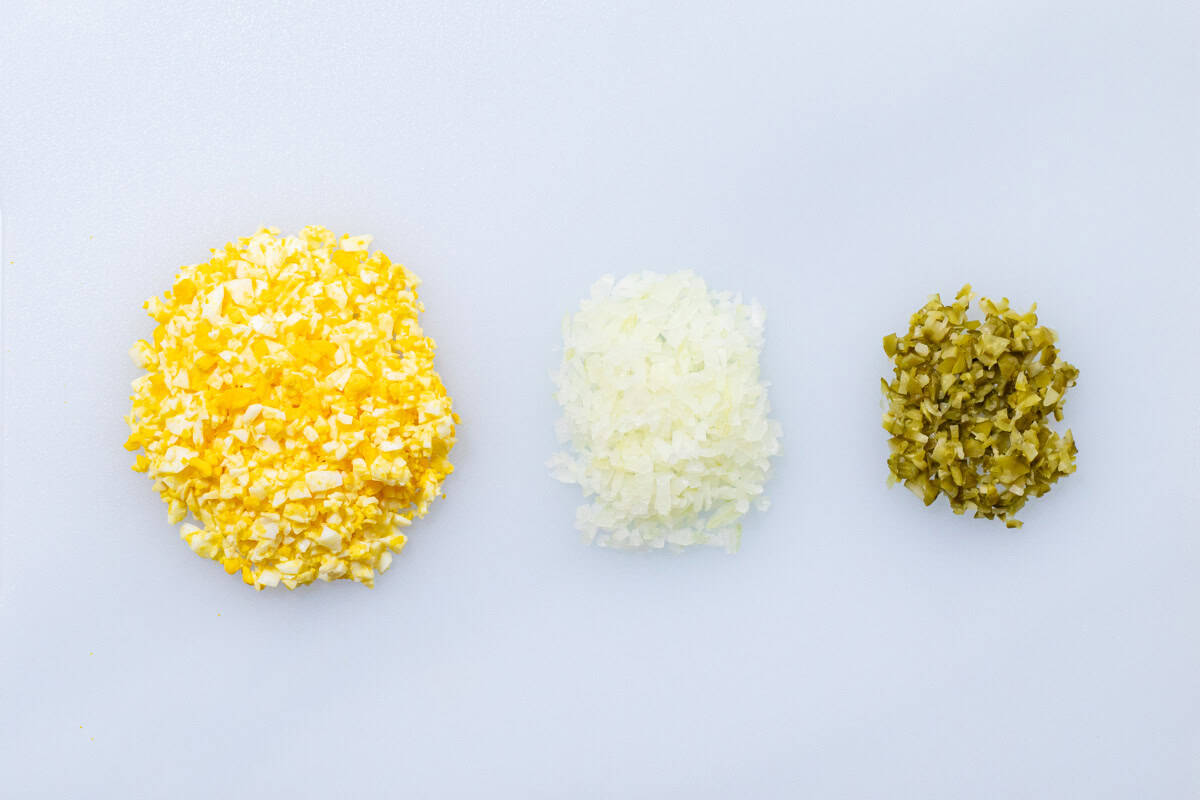
Step 1
Finely chop the hard-boiled egg, onion, and pickles. After chopping the onion, wrap it in paper towels and squeeze firmly to remove any excess moisture.
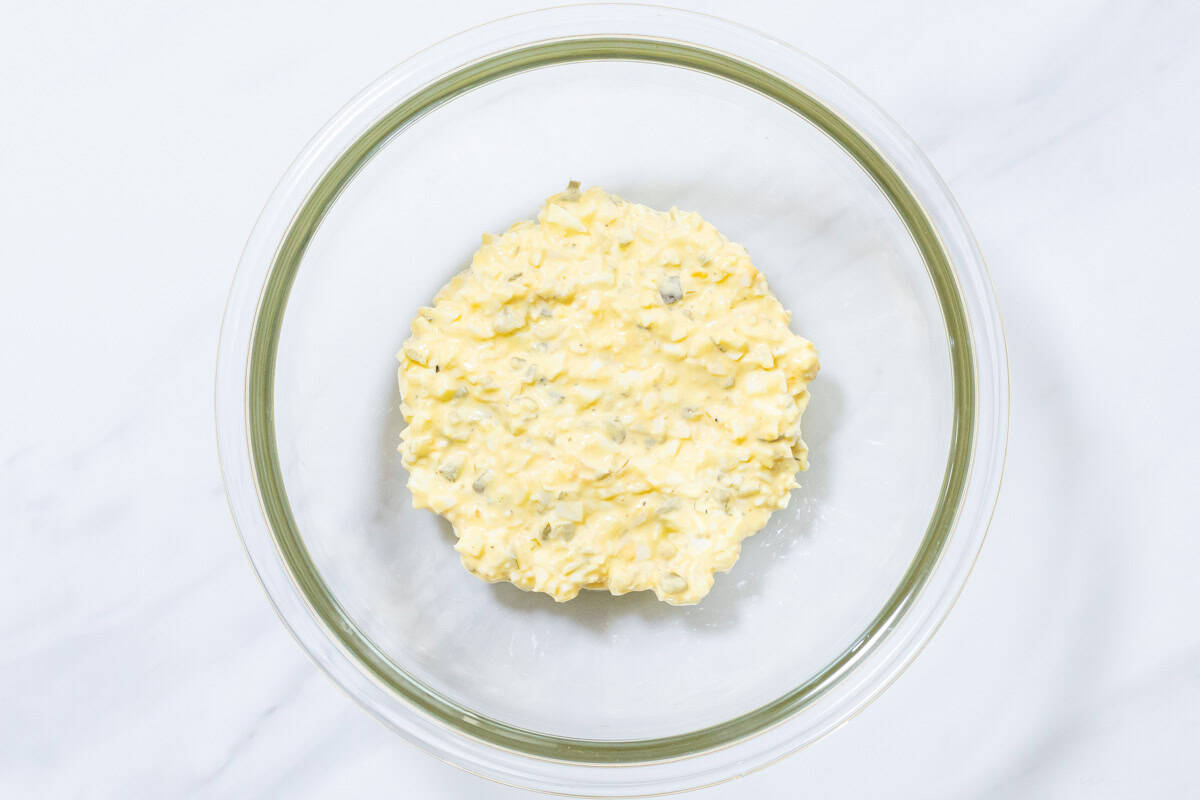
Step 2
Put the egg, onion, and pickles in a bowl, then add Japanese mayonnaise, lemon juice, sugar, salt, and pepper. Mix everything thoroughly.
For the nanban sauce:
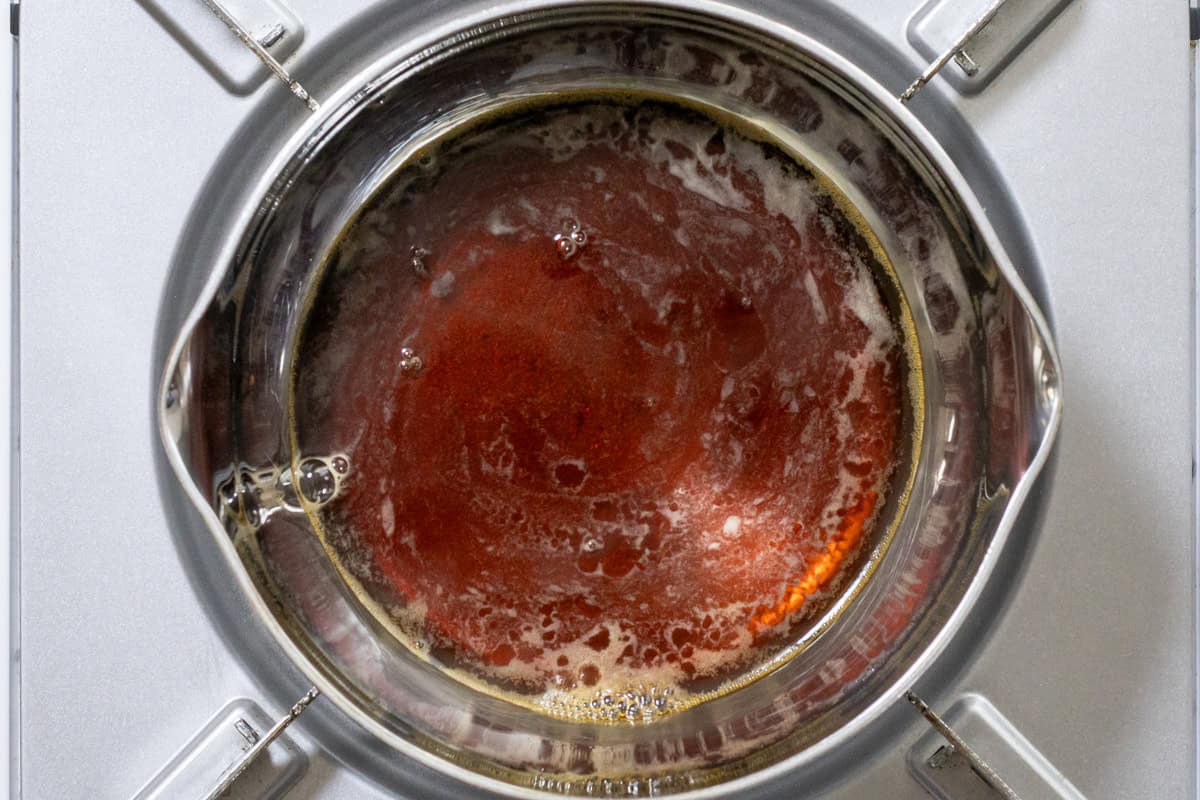
Step 3
In a pot, combine the ingredients for the nanban sauce (rice vinegar, mirin, sugar, soy sauce, and ground chili pepper) and heat over low heat. Once it reaches a simmer, let it cook for about 30 seconds.
For the fried chicken:
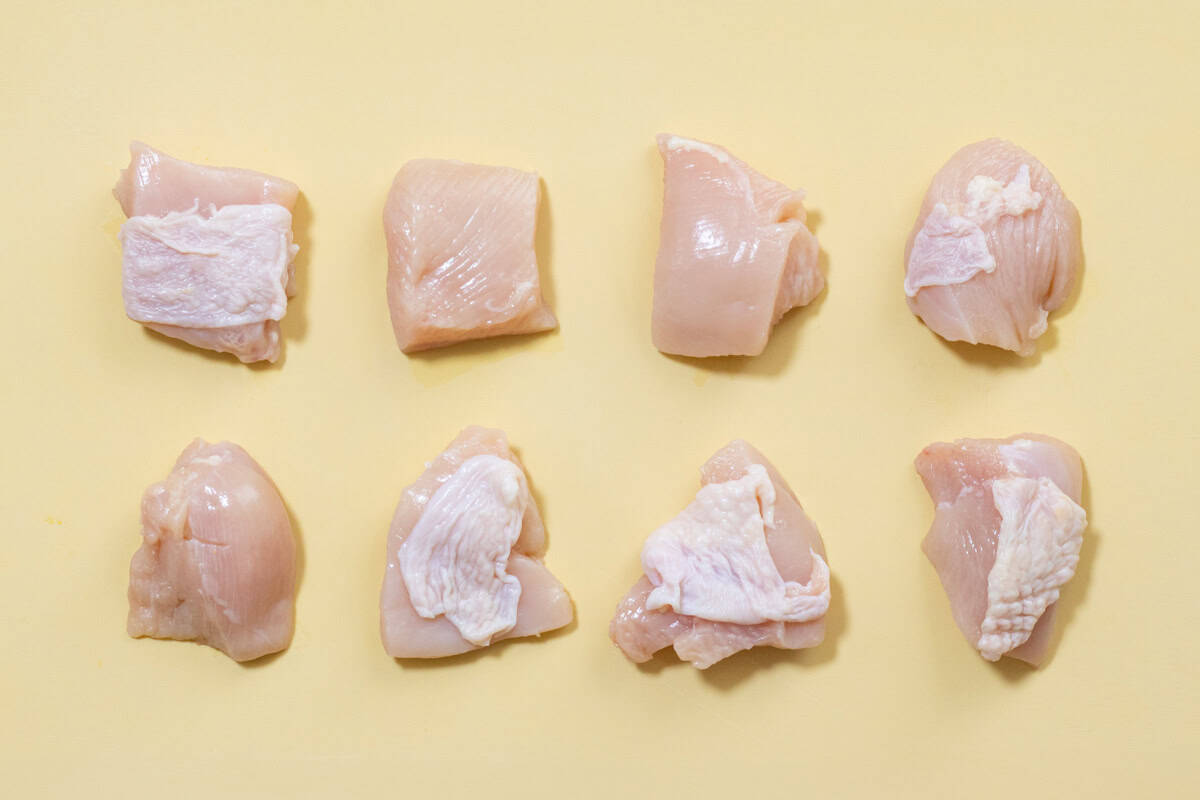
Step 4
If there are any blood spots, yellow fat, cartilage, or tough tendons on the chicken thighs or breasts, remove them. Then, cut the meat into bite-sized pieces, about 1-1.5 oz (30-40 g) each.
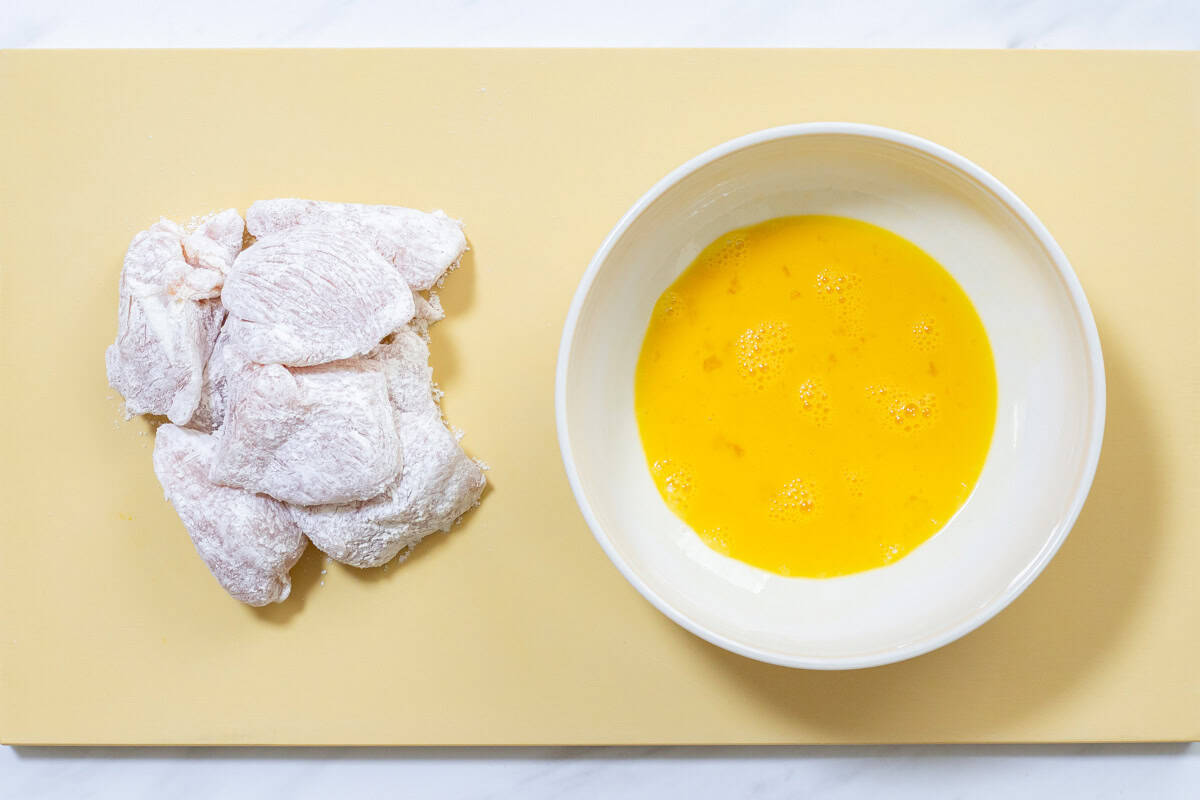
Step 5
Sprinkle salt over the chicken pieces, then coat them evenly with flour. Crack an egg into a large bowl and beat it well.
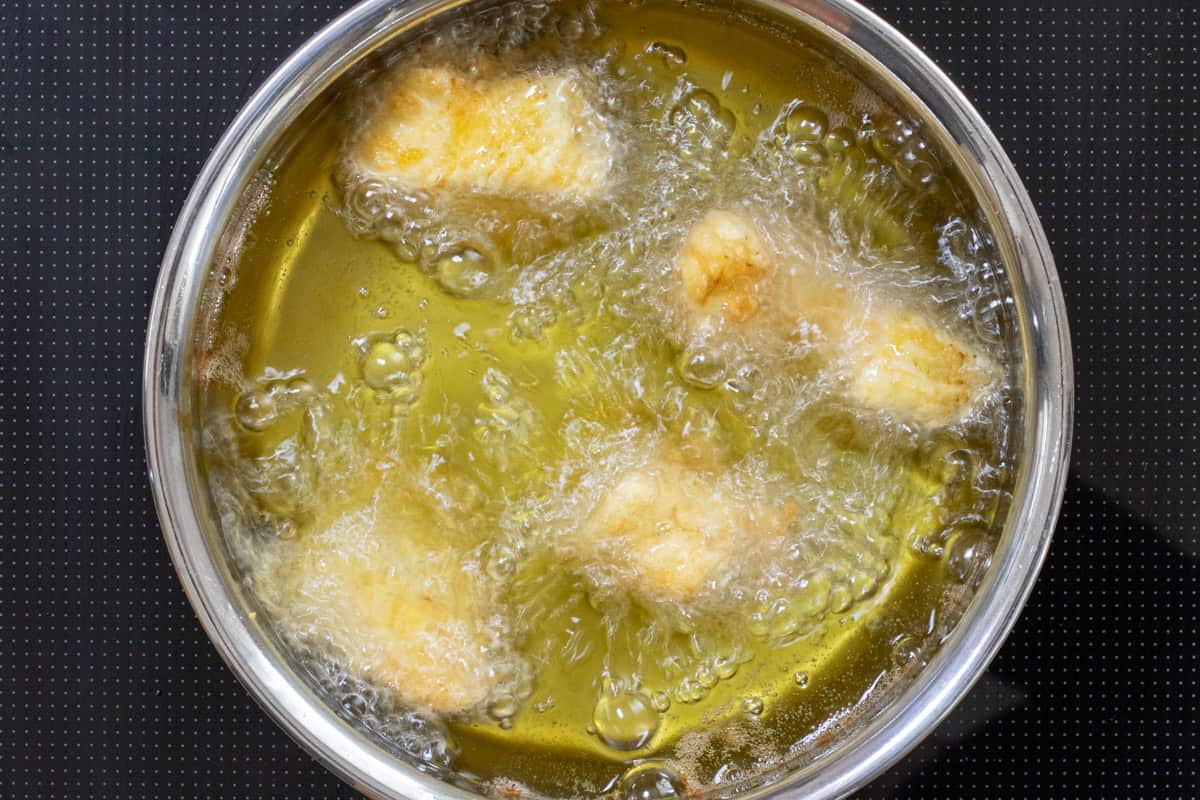
Step 6
Heat oil in a pot until it reaches 338-356℉ (170-180℃). Once the oil is hot, thoroughly coat each chicken piece in the egg mixture, then carefully add them to the oil one at a time. Deep-fry them for about 5-7 minutes, or until the pieces float to the surface of the oil, indicating that they are done.
Be careful not to add too many pieces at once, as this can cause the oil temperature to drop significantly. The chicken should occupy no more than about two-thirds of the oil’s surface area.
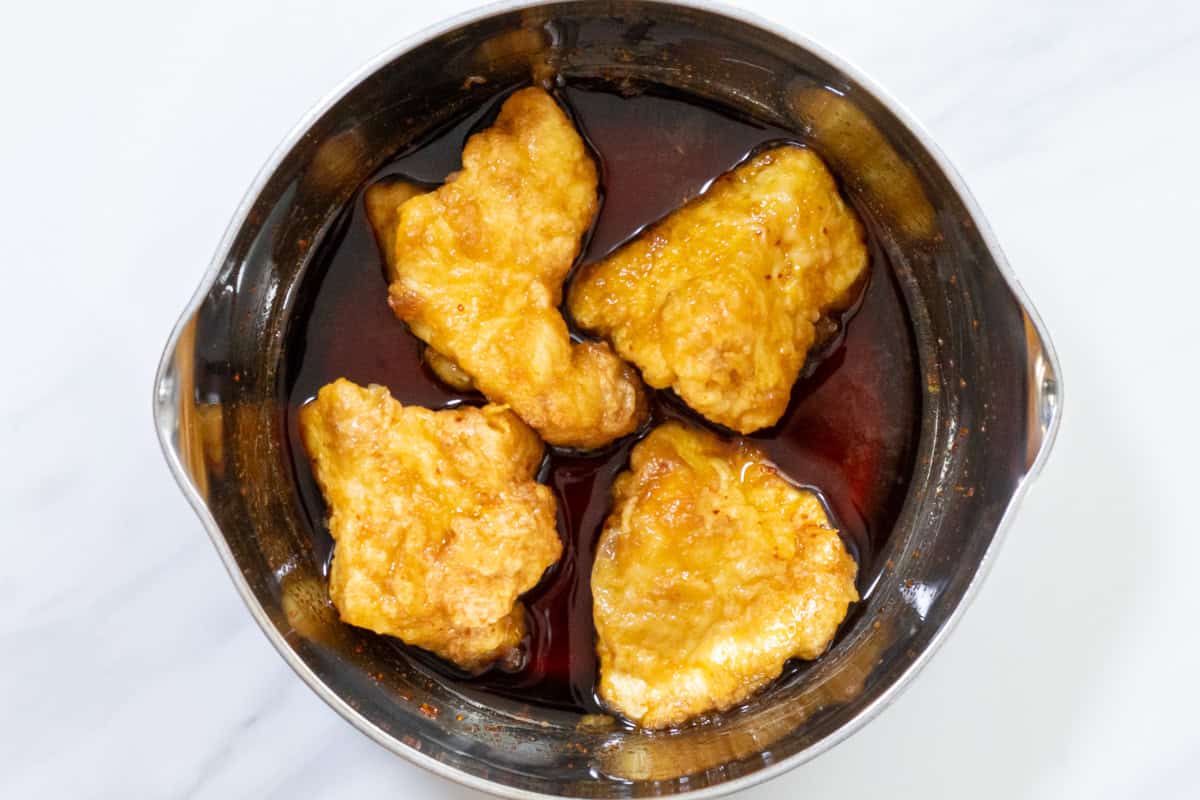
Step 7
Transfer the fried chicken pieces to the pot with the nanban sauce. Let them soak for a few minutes, flipping them occasionally to ensure they absorb the flavors evenly.
If there are any fried bits left in the oil, skim them out with a mesh skimmer or strainer, then repeat the frying process (steps 6 and 7) until all the chicken pieces are cooked.
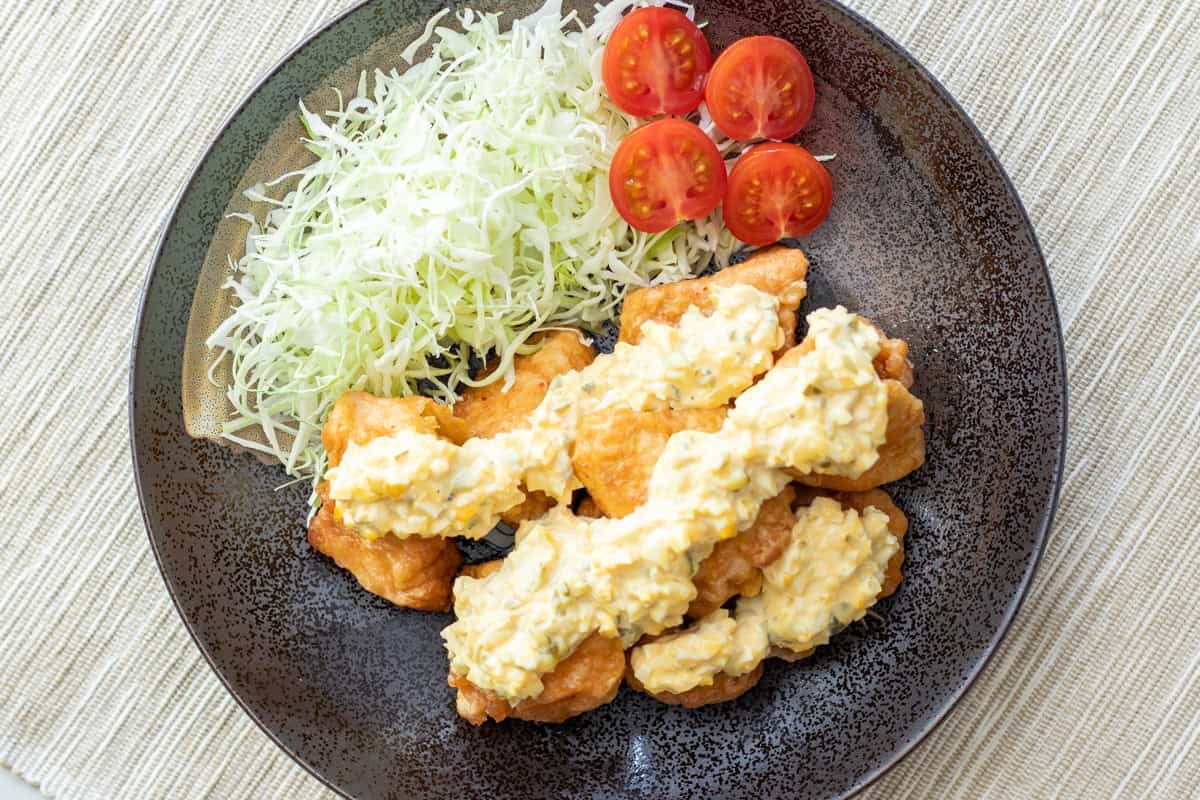
Step 8
Place the chicken pieces on a plate and top them with tartar sauce. Add fresh vegetables on the side as desired.
To store
You can store it in the refrigerator for up to 3 days.
How to dispose of used cooking oil
After enjoying chicken nanban, it is essential to properly dispose of the oil used for deep-frying. Pouring large amounts of oil directly down the drain can clog pipes.
In Japan, the most commonly recommended method is to use an oil-solidifying powder. This powder solidifies the oil, making it easy to dispose of.
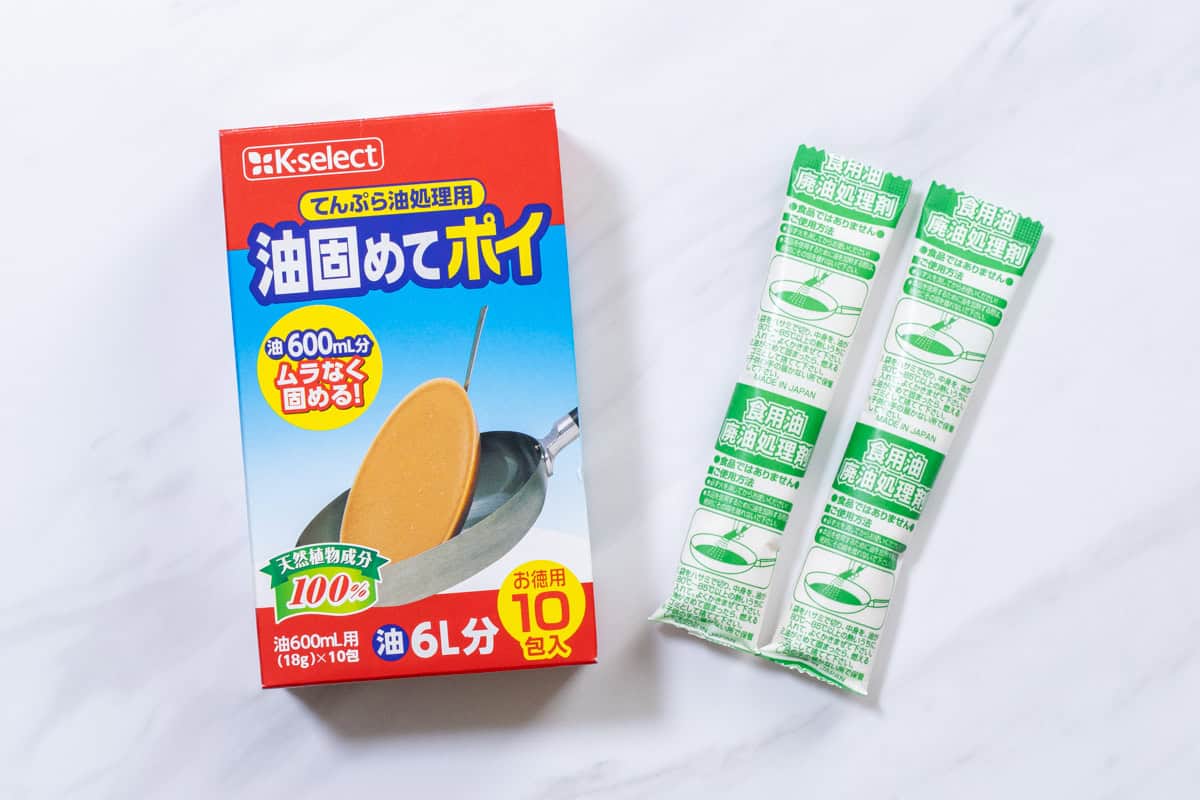
If this is not available locally, you can also use materials like newspaper to absorb the oil or pour it into an empty container after it has completely cooled.
When disposing of used oil, be sure to follow your local waste disposal regulations.
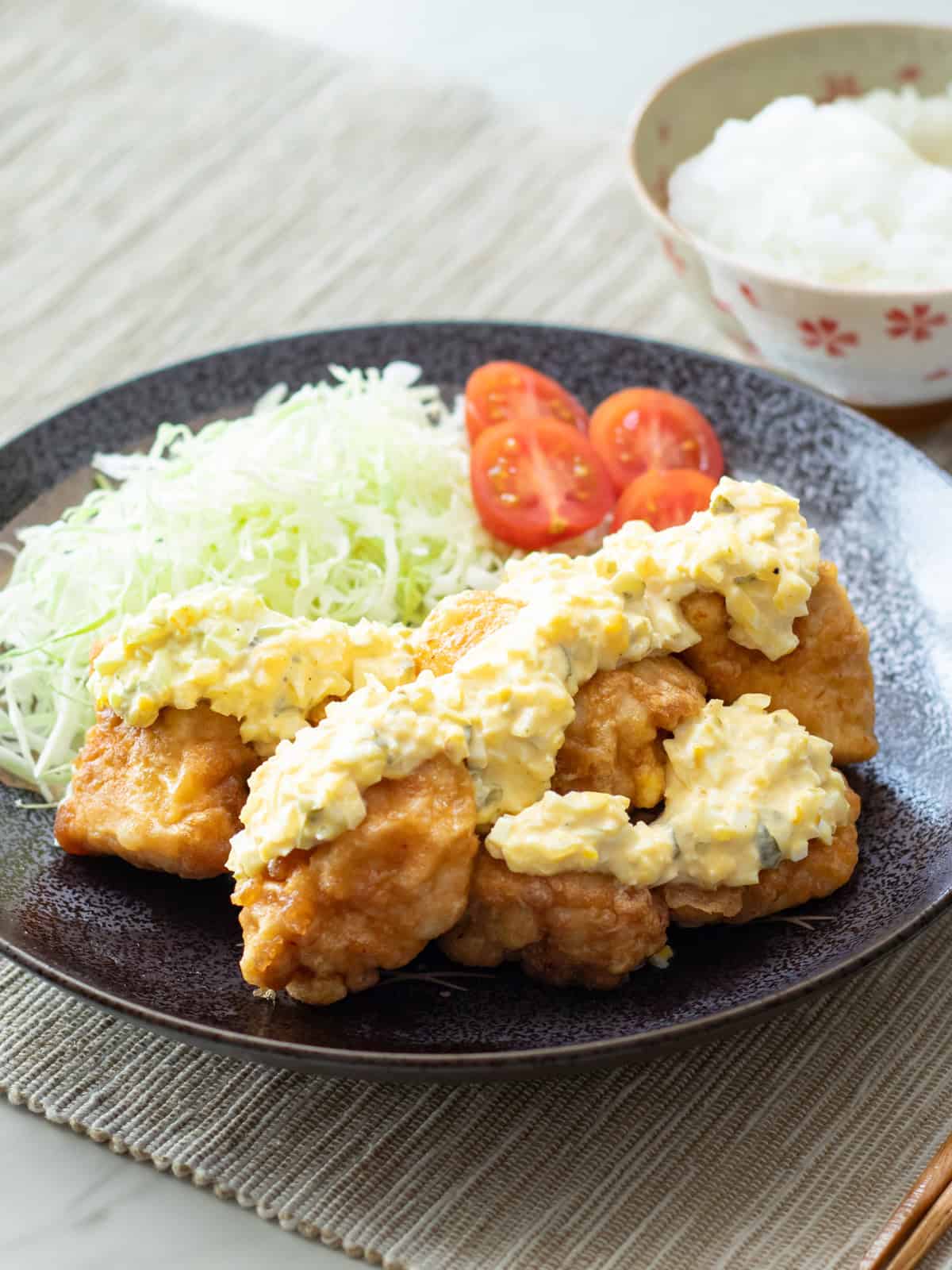
If you try this recipe, I’d love to hear what you think. Please consider leaving a review and star rating in the comments below. If you enjoyed it, I’d really appreciate it if you shared it with your friends.
More chicken recipes you'll love
Recipe card

Chicken Nanban (Authentic Miyazaki-Style)
Ingredients
For the Japanese tartar sauce:
- 1 large egg (about 2.1 oz/60 g, including shell)
- ⅛ onion (about 0.9 oz/25 g)
- 0.44 oz pickles (gherkins)
- 2 Tbsp Japanese mayonnaise (such as Kewpie Mayo; 0.53 oz/15 g per 1 Tbsp. For a homemade version, please refer to the linked article.)
- 1 tsp lemon juice
- ¼ tsp sugar
- ⅛ tsp salt
- a pinch of ground black pepper
For the nanban sauce:
- 2 Tbsp rice vinegar
- ½ Tbsp mirin
- 1 ½ Tbsp sugar
- 2 Tbsp soy sauce
- a pinch of ground chili pepper
For the fried chicken:
- 10.6 oz boneless, skin-on chicken thighs or breast
- a pinch of salt
- 3 Tbsp all-purpose flour (plain flour)
- 1 large egg (about 2.1 oz/60 g, including shell)
- 1.4 inches (3.5 cm) or more of neutral oil in the pot (for deep-frying)
Instructions
For the Japanese tartar sauce:
- Finely chop the hard-boiled egg, onion, and pickles. After chopping the onion, wrap it in paper towels and squeeze firmly to remove any excess moisture.
- Put the egg, onion, and pickles in a bowl, then add Japanese mayonnaise, lemon juice, sugar, salt, and pepper. Mix everything thoroughly.
For the nanban sauce:
- In a pot, combine the ingredients for the nanban sauce (rice vinegar, mirin, sugar, soy sauce, and ground chili pepper) and heat over low heat. Once it reaches a simmer, let it cook for about 30 seconds.
For the fried chicken:
- If there are any blood spots, yellow fat, cartilage, or tough tendons on the chicken thighs or breasts, remove them. Then, cut the meat into bite-sized pieces, about 1-1.5 oz (30-40 g) each.
- Sprinkle salt over the chicken pieces, then coat them evenly with flour. Crack an egg into a large bowl and beat it well.
- Heat oil in a pot until it reaches 338-356℉ (170-180℃). Once the oil is hot, thoroughly coat each chicken piece in the egg mixture, then carefully add them to the oil one at a time. Deep-fry them for about 5-7 minutes, or until the pieces float to the surface of the oil, indicating that they are done.Be careful not to add too many pieces at once, as this can cause the oil temperature to drop significantly. The chicken should occupy no more than about two-thirds of the oil’s surface area.
- Transfer the fried chicken pieces to the pot with the nanban sauce. Let them soak for a few minutes, flipping them occasionally to ensure they absorb the flavors evenly.If there are any fried bits left in the oil, skim them out with a mesh skimmer or strainer, then repeat the frying process (steps 3 and 4) until all the chicken pieces are cooked.
- Place the chicken pieces on a plate and top them with tartar sauce. Add fresh vegetables on the side as desired.
Notes
- You can store it in the refrigerator for up to 3 days.
- The Nutrition Facts label assumes that the amount of oil absorbed by the chicken is approximately 8% of its weight.
- If you use chicken breast, the total calorie count will be about 550.

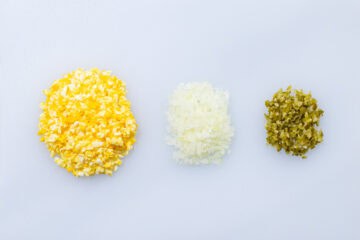
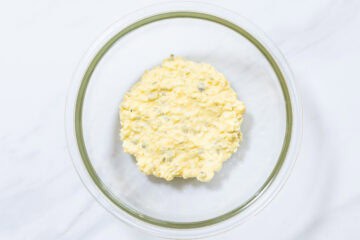
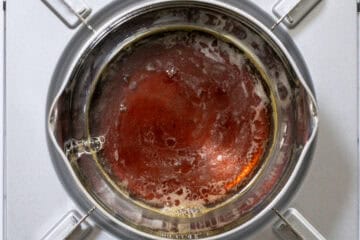
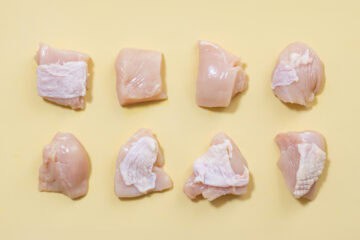
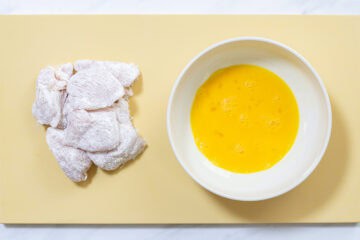
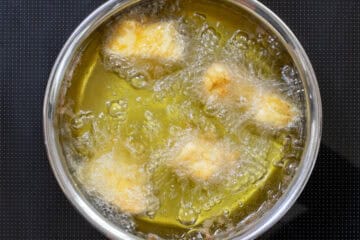
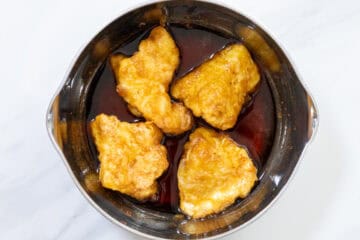
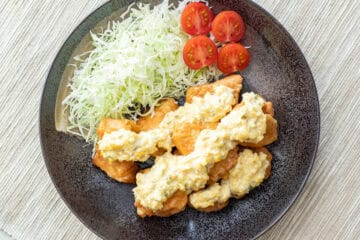
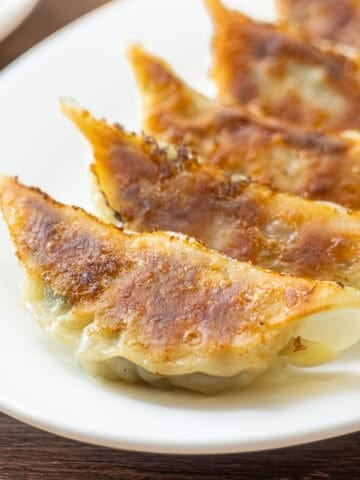
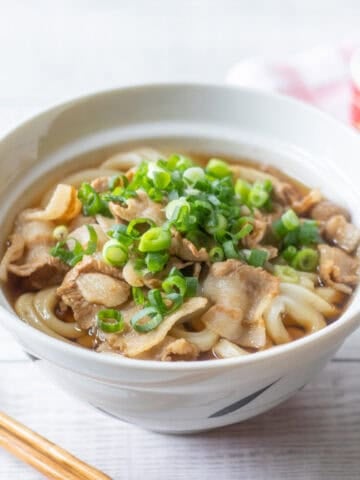


Leave a Rating and a Comment